How to write a customer success story
Before a prospective customer reaches for their credit card to buy from you, they need to feel confident that you can deliver on what your product or service promises. They want to know how those that came and spent before them made out.
Sure, you could say that you’re great at X, or that you’re ahead of the competition when it comes to Y. But at the end of the day, what you need to win new business is social proof.
One of the most effective ways to prove your worth is through a customer success story, also known as a case study. While it’s not the only form of social proof that works, it’s an all-powerful piece of your brand’s persuasion mosaic.
So, in this post we’ll focus on customer success stories: why they’re important, how to write them and how to make them an effective weapon in your digital arsenal.
What is a customer success story and why is it important?
A customer success story is a story about how and why a customer uses your product or service. It’s a story that persuades, that signs from the rooftops, “Just look at these amazing results. You know you want to work with us, too!”.
Think of a customer success story as a lure. It’s a way to dangle amazing results in front of your prospects and nudge then into purchasing from you and becoming a valued customer.
Any business can make bold claims about their products or services. But here’s the thing: since most do, of course people have become numb to superlative-littered copy and hyped-up presentations and videos. Prospects have come to ignore them.
What they want to see is evidence. They want proof that your product or service delivers those amazing results. If you can show proof, you’ll gain their trust and turn them into customers.
So, a customer success story should tell the story about how your customer tackled a problem and overcame it, or how they achieved a goal as a result of using your product or service. The aim is to have prospects see themselves in your story so they feel compelled to buy that product or service, too.
Here’s a customer success story example from Patagonia:
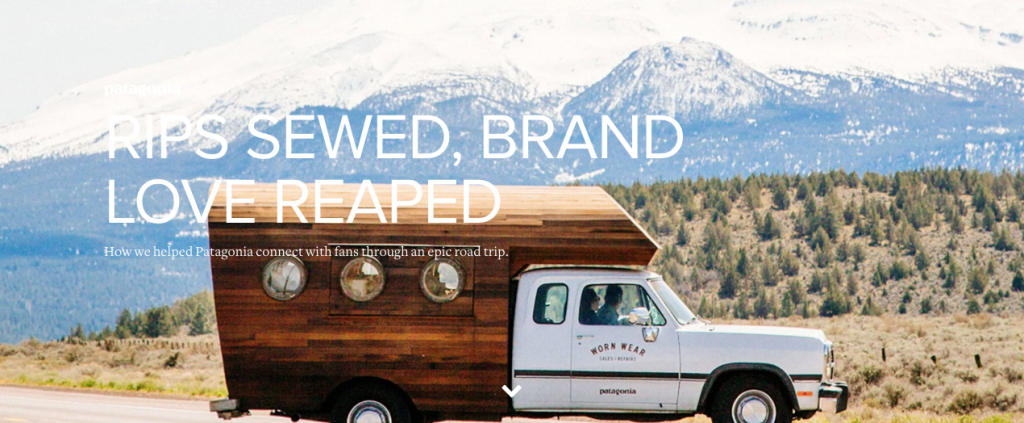
Okay, with that out of the way, let’s get to work on how to write a customer success story.
How to write a compelling customer success story
Customer success stories aren’t so difficult or time-consuming to write as other pieces of content like whitepapers or ebooks.
Once you find your happy customer who is willing to answer your questions (here is a list of questions you might want to ask) and share their experience publicly, here’s what you need to write your customer success story:
Headline
Ideally, your headline should summarise the customer, their problem, and the result. You might want to include:
- The customer’s brand name, especially if it’s a well-known brand
- Your brand name
- The most compelling benefit
- A data point that could easily grab readers’ attention
It’s best to write your headline last because, as you write your story, you’re likely to easily figure out which part of it you want to highlight.
For example, if you helped a customer boost revenue by 180%, that’s a highly relevant detail. Of course you’ll want to spotlight it in the headline and several times in the content, especially in the results section.
You can take some inspiration from these headline examples from CoSchedule:
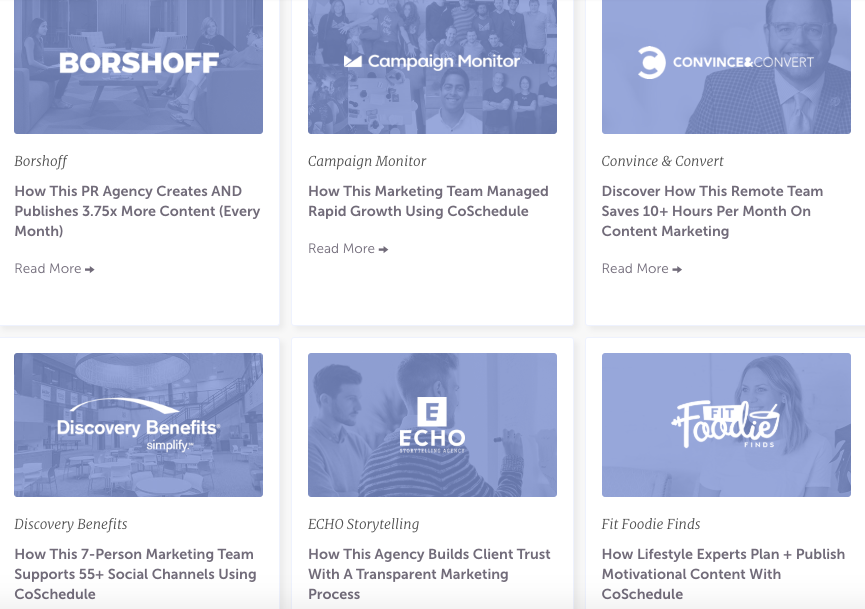
Your headline’s job is to tell the story of how your customer achieved their goal with your product or service. Here’s how:
- Take as many words as you need to make the case that it’s worth their click and their time
- Be specific (this is why, this is how, the reason is)
- Wherever possible, let the numbers tell the story
If you need help creating irresistible headlines for your stories, these six free headline tools can come in handy.
Summary
Your prospects are busy people so don’t expect them to read your entire story. Most of them will skim the text to get the essential information they need.
To make it easier for them, make sure you add a two to three sentence paragraph summary near the top that describes the story of your customer.
Ideally, it should include:
- The customer’s mission
- The problem they were experiencing
- How they solved that problem by using your product or service
- Important facts
- Visuals to support those facts
To see what this section could look like, here is an example from Apple:
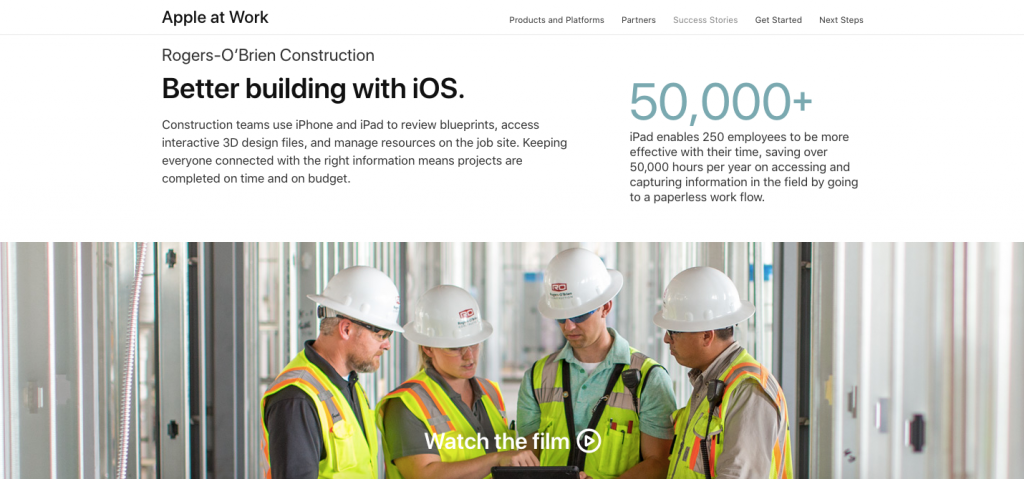
Numbers are always eye-catching and powerful so find ways to add them to your headline or summary.
Here’s another good example from Fractl where they feature all those results in an infographic-style visual:
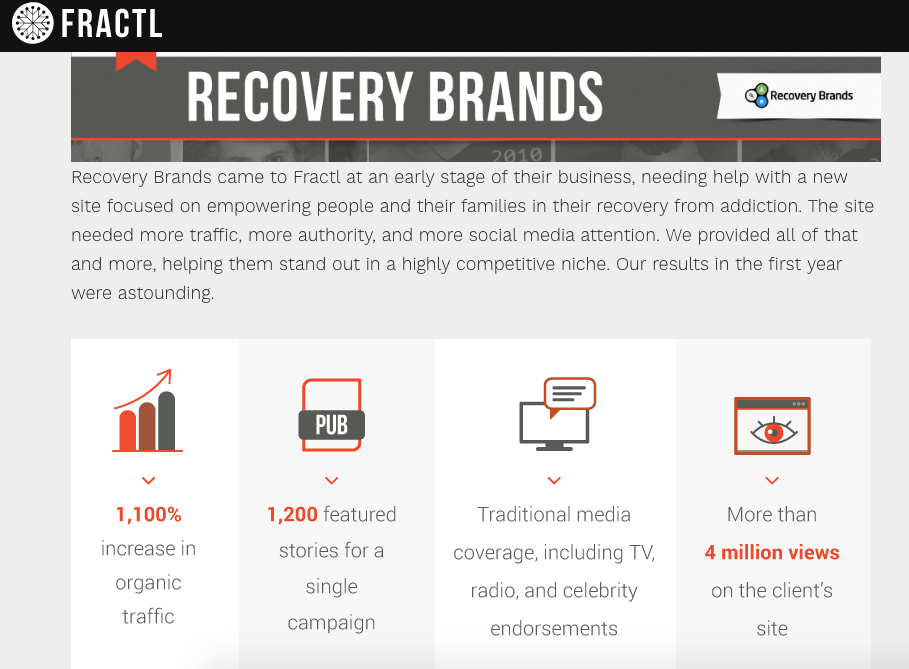
And here’s another cool thing that they do:
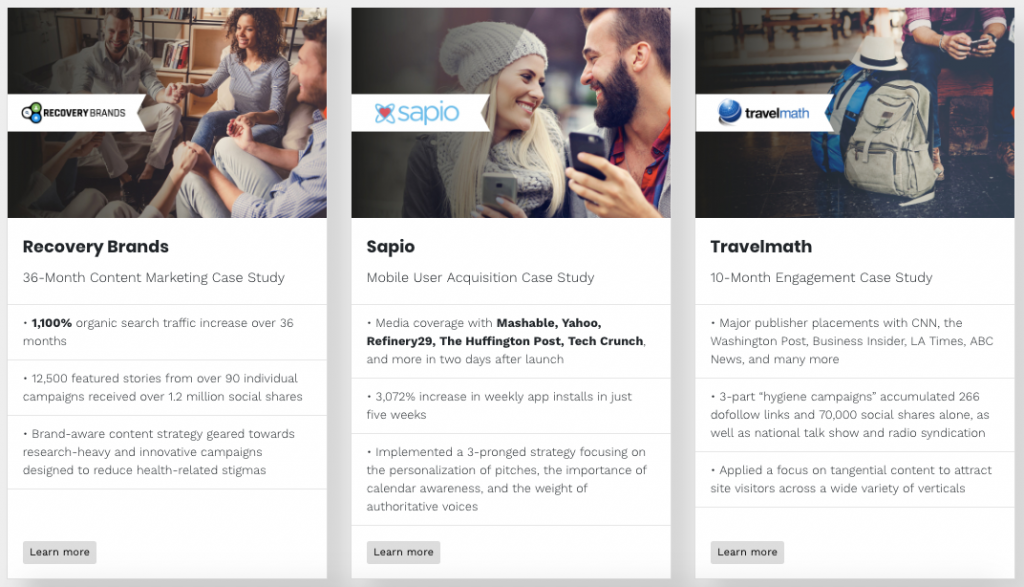
They have a neat customer success stories landing page where they share the results even before visitors click to read each individual story.
Company profile
If your customer is a hugely popular company like Facebook or Apple, meaning one that most everyone has heard of, then you won’t need to spend too much time and space to introduce them to the reader.
Keep the profile short and include only the information that’s essential for the reader to understand the context and the problem they were facing.
Take this customer success story from Hilton:
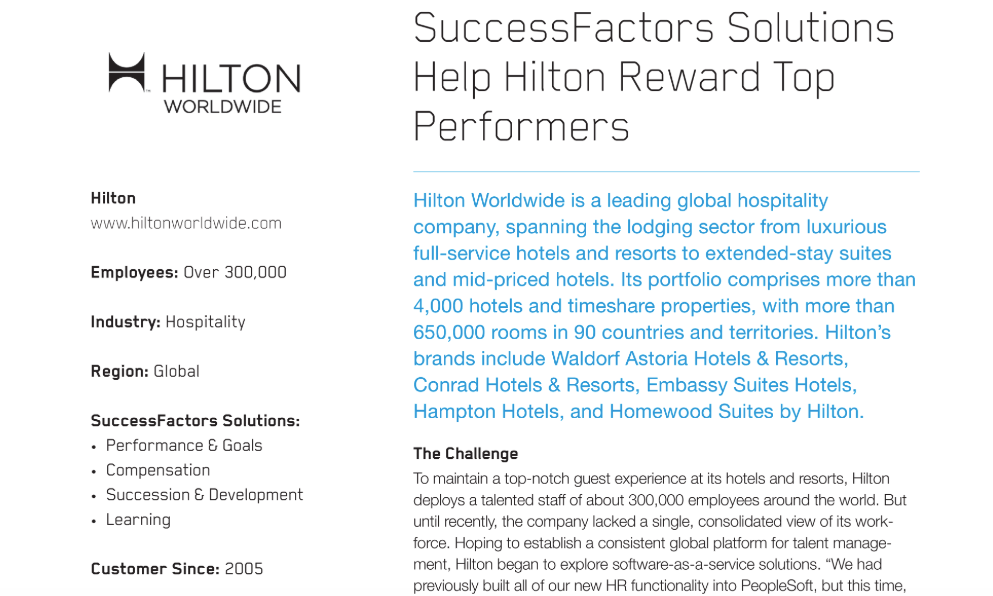
If it’s a lesser-known company, you might want to write a longer profile so readers get a clear picture of that company, what they sell and the challenges they were facing.
Take a look at this example:
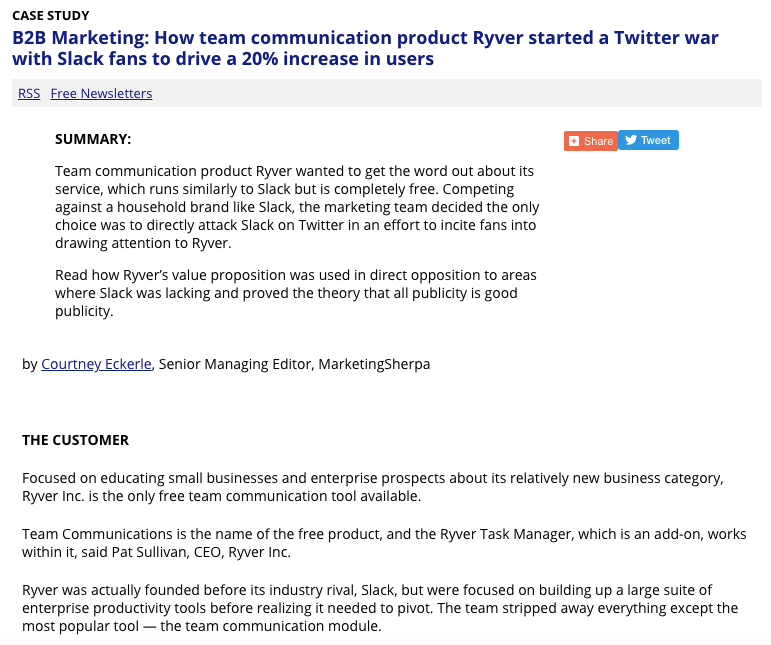
The challenge
There’s no better or more effective way to start your story than with the problem or challenge that your customer faced. So think about the struggles that your customer was facing before you stepped in and why alternatives (if any) weren’t working.
Also try to include their previous goals, which can be anything from ways to save time or money or being more productive, healthier or happier.
Try to write this challenge to set the stage and get the reader to see themselves in your story. Make it exciting and interesting to read by adding sensory details, frustration points, and even colourful anecdotes.
Here’s a good example from Patagonia:
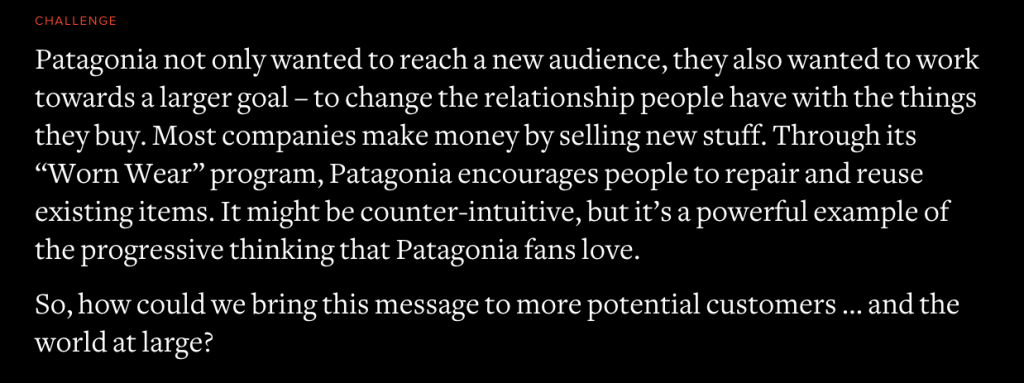
You can clearly see what Patagonia was struggling with and how keen they were to find a way to reach a new audience.
Take a look at this other example where the consequences of not having a system in place to run a business are clearly outlined using easy-to-read bullet points:
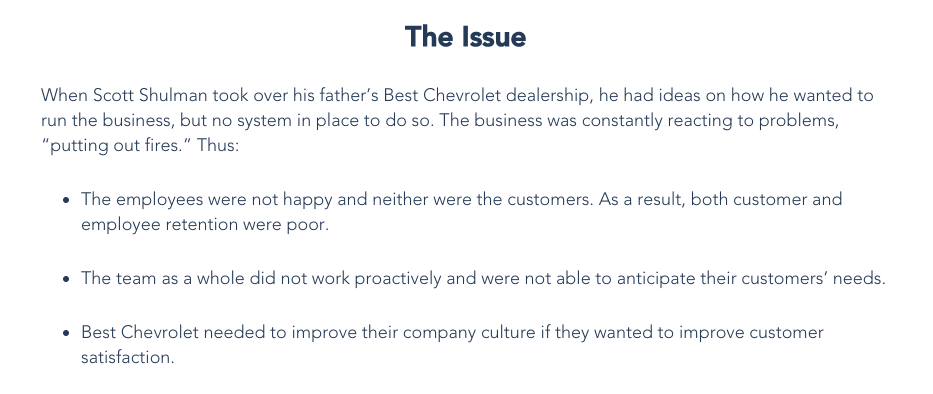
The solution
Now’s the time to tell the story of how your customer came to discover, buy and use your product or service. And how their business or life forever changed for the better.
Try to highlight the moment your customer realised they needed a product or service like yours, what helped them decide to work with your company and how relieved or excited they felt about finally finding a solution to their problem.
Maybe they were using a different solution but the results were disappointing. Or maybe they didn’t even know what they needed until they discovered your product or service or until you made your pitch.
Here’s a simple example of how this section can look:

The results
Time to show off that happy customer and the amazing results they achieved with your help. If you can express them in numeric form, like in this example below, so much better.
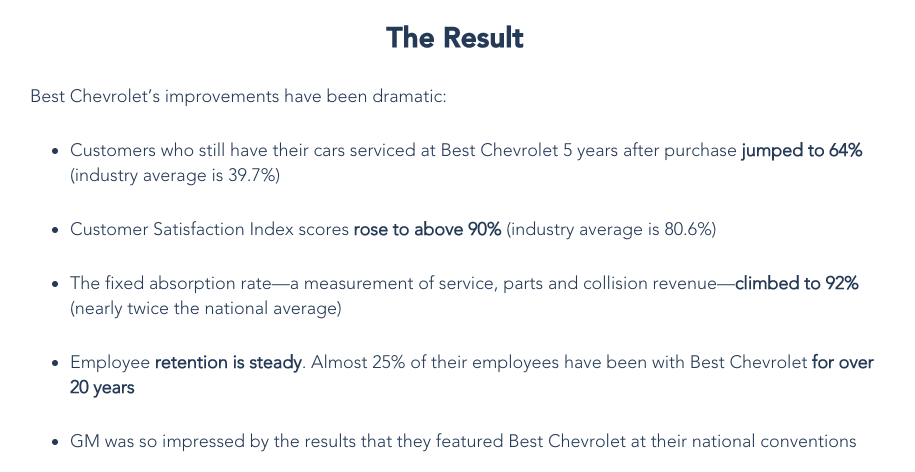
Just make sure to always put your customer at the centre of your story.
Using visuals in your customer success story
Visuals are powerful. They can help bring your success story to life. They can add the extra oomph you need to get and keep readers’ attention. And they can also make your story easier to skim.
So make sure you intersperse the text with visuals, whether that means logos, photos, graphs or images with quotes. Make them relevant, high quality and easy to see on the screen.
Here are a few ways you can add more visuals to your story:
- Include the customer’s logo
- Present data/ results that can be made into callouts or mini-infographics
- Turn customer quotes into images
- Grab and use images where possible: the product in use, screenshots, people.
Take a look at these examples included in a CoSchedule customer success story:
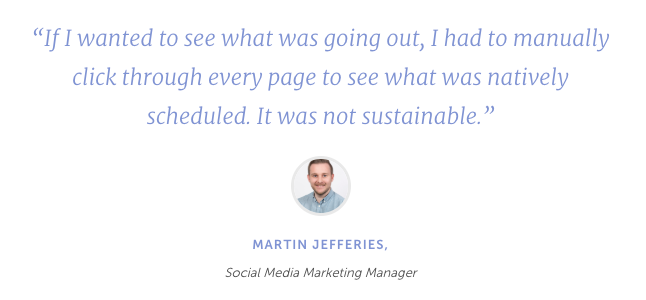
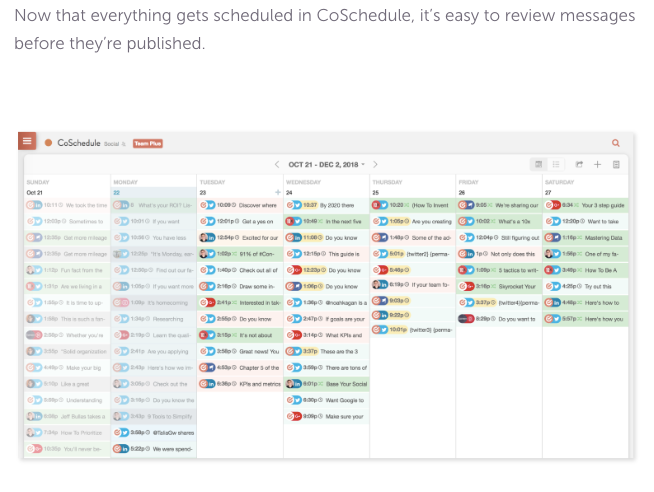
Promote your story far and wide
Now that your customer success story is complete and published on your website, you also need to get it out there for the world to see.
You can promote your story by including it in your email campaigns or by sharing it on your social media accounts. Find catchy snippets, quotes or pieces of visual content that will grab people’s attention.
Wrapping up
Writing a customer success story is not as difficult as it may seem. Especially now that you have great examples to follow and a clear structure to help you format the information you gather from your customers.
So, what are you waiting for? Go and start writing your amazing customer success story now.
